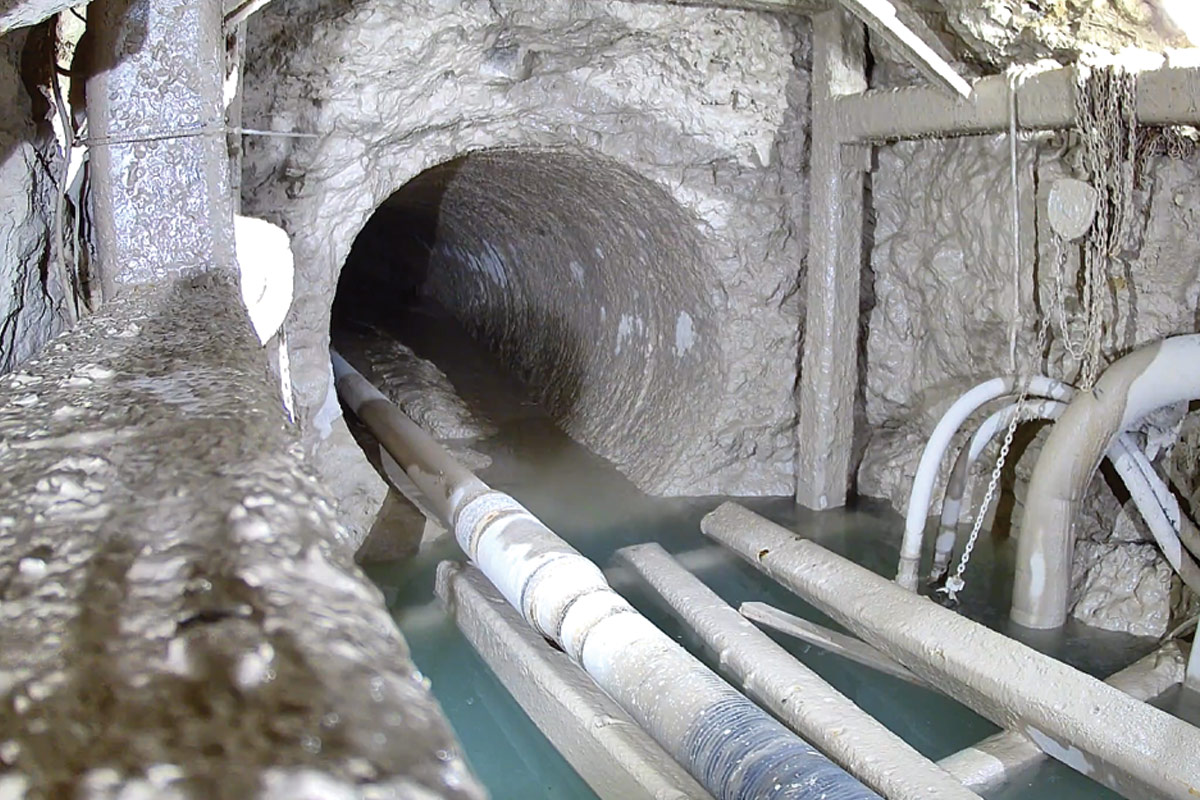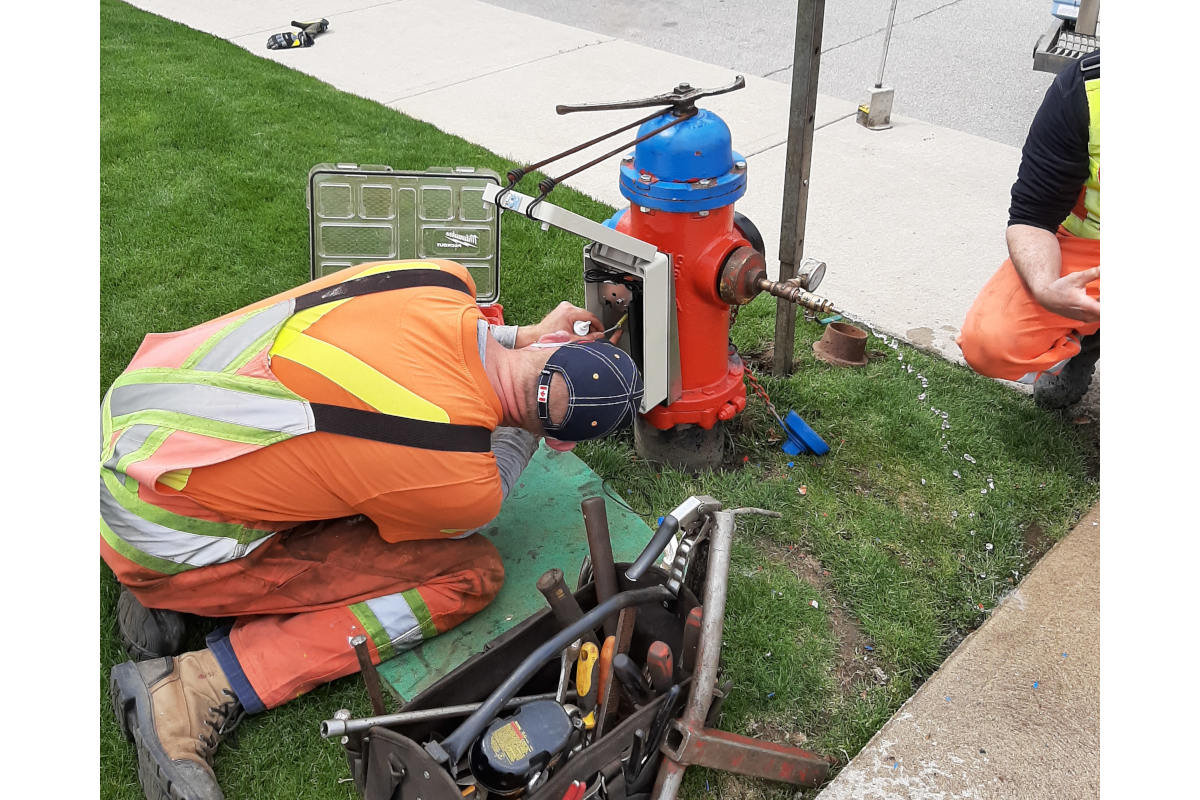
Pipe Bursting vs. Open-Cut Excavation – Comparison When Replacing Water Main
It’s generally stated that static pipe bursting uses 85 percent less excavation than open cut when replacing water main. But what are the real numbers on an actual project? And even more importantly, why does it matter?
As a team, we went through and analyzed multiple completed water pipe bursting projects to decipher how much excavation was performed. The analytics included reviewing smaller projects (3,000 ft of water main replacement) and larger projects (50,000-plus ft of water main replacement). The data also included replacing different size water distribution main generally ranging from 4 in. to 12-in. In addition to replacing the water main, all of the project scopes included replacing valves, hydrants, cross connections and service connections. Pipe bursting schematics typically include locating launch and receive pits at hydrant and valve locations to minimize excavations.
RELATED: What Host Pipe Materials Are Feasible to Replace?
It is important to note the general locations of these projects were completed in dense urban settings including mature residential neighborhoods and business districts. These types of locations generally have greater value in reducing excavation due to increased restoration costs and social cost implications. Compared to rural areas with no hardscapes or social implication, the reduction in excavation value is lower.
The findings? Static pipe bursting used 11 times less excavation when compared to open cut, which is 92.2 percent less excavation.

Static pipe bursting receiving pit in Florida on a water main replacement project.
Why Does it Matter?
While 92.2 percent less excavation is a big number that grabs people’s attention, it is in the details of what all goes into the time and resources to both dig and restore small pits or long open trenches. One of the largest expenses for a utility contractor is in equipment, fuel and maintenance. Reducing the size and number of excavators and dump trucks within a contractor’s fleet can produce significant economical benefits.
Another large cost on projects is in the excavation of each pit or trench. While the initial digging carries its own expense, the restoration effort is multiplied with more excavation including material costs, compaction of subgrade and aggregates, densities, restriping, asphalt, concrete, curb and sod. When translating 500 ft of 8-in. water main replacement into a 50,000-ft replacement project, the results are staggering.
Static pipe bursting 19.56 CY x 100 = 1,956 total CY
Open cut 222.22 CY x 100 = 22,222 total CY
Lastly, is the time spent on a jobsite. Another large expense on a project are labor costs. With less excavation and restoration activity, expedites the project schedule. The faster work is completed can translate into savings in labor and inspection costs. While this analysis purely reviewed the excavation comparison between two construction methods, there are further benefits that can be realized for the city with an expedited schedule and reduced excavations. These can include a reduction in social costs, reduction in engineering and inspection, traffic impact, no loss of revenue for local business and entertainment districts, smaller carbon footprint, increase in safety and less friction for homeowners.
“Cities and their residents have already invested time and resources into their roads and hardscapes. Why double spend on rebuilding these assets when pipe bursting reduces the need to do this by 92.2 percent?” says Murphy Pipelines general manager Ed Steele.

Looking at the math of how we get to 11 times less excavation using static pipe bursting to replace water main. CY = Cubic Yards CF = Cubic Feet
Why Each City Should Run their Own Analysis
When we performed the excavation comparison analysis, we used a 3-ft wide trench for open cut. This standard was used as it is one of the most frequent that we see throughout the United States, with the width of trench required to be the outside diameter of pipe plus 30 in. It should be conceded that some cities have standards that allow for a narrower open cut trench which can reduce overall costs in excavation and restoration. On the flip side, it should also be understood that some cities require a further cut back of the road beyond the width of the trench, including an additional 1-ft on both sides of the trench width which will increase overall costs beyond our 3-ft wide trench analysis.
RELATED: 2015 Project of The Year- Rehabilitation: Pipe Bursting at Arlington National Cemetery
Each city can simply run their own analysis on the excavation comparison of static pipe bursting and open cut utilizing standards within their city. This analysis will afford the city an accurate comparison of how the methods will compare.

Typical mature residential street showing excavations on a pre-chlorinated pipe bursting project.
One myth that we frequently hear is pipe bursting is only practical when there are very few service connections on a water main replacement project. While it is true that less connections equate to less excavation, on average we replace water main in dense urban residential neighborhoods and commercial areas with lot lines from 35 ft to 70 ft apart. For a typical residential block, this translates into replacing six to 15 service connections per pipe burst. In the past 20 years, we have yet to come across a project where open cut is more advantageous due to the frequent number of connections.
We are also commonly asked if digging at the services is required or if it’s possible to use an internal cutter. While it is not possible, even if it was the small additional excavation required is a minimal expense to replace the hard connection. Replacing the hard connection also affords the community to identify and replace lead services. In our analysis, removing the excavations at the services only saves 5.33 CY per 500 ft of water main replaced. With the effort and expense to replace the water main that is at the end of its useful life, without cities replacing the hard connection will increase the risk of continued water loss and possible future investment in a hard connection replacement program.
As cities begin to embark on large scale water main replacement programs, performing a simple analysis such as the excavation comparison between construction methods can help to provide a more thoughtful approach to capital improvements programs. This, in turn, will create more efficiencies for the city, afford better use of resources and protect the investments of the city and their customers.
Todd Grafenauer is vice president and education director with Murphy Pipelines.




